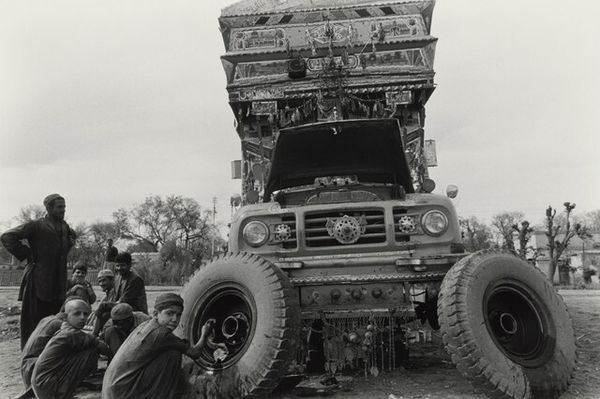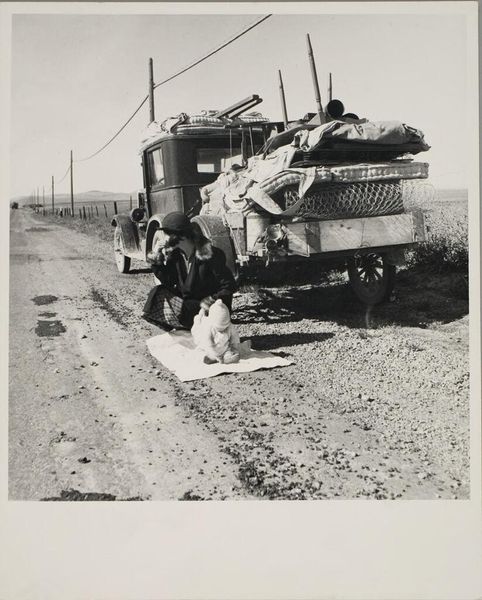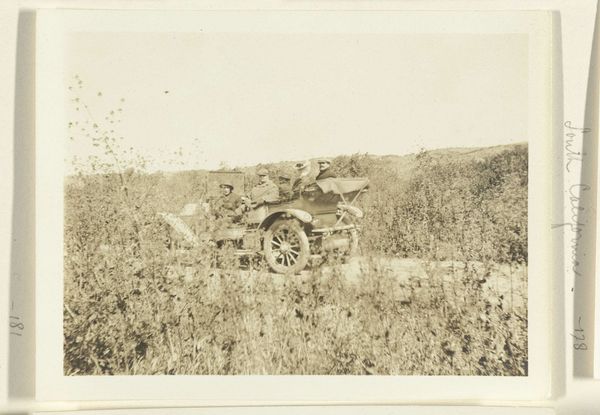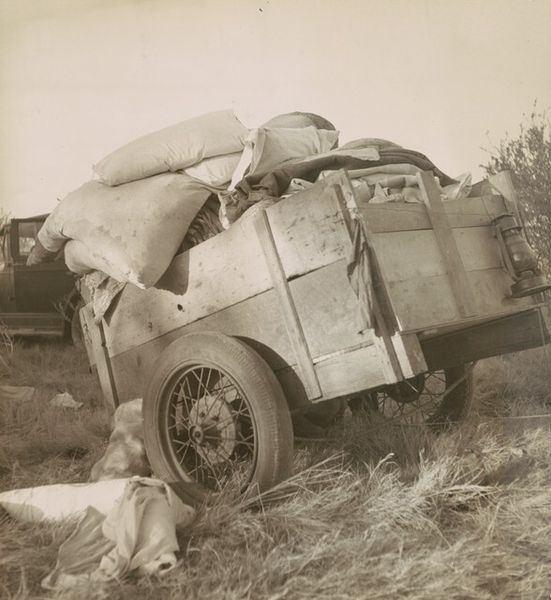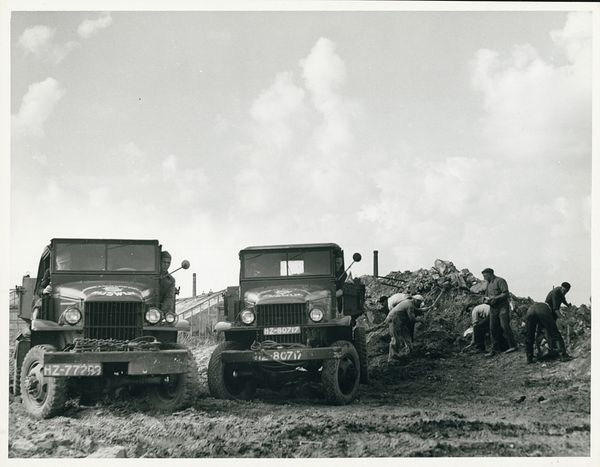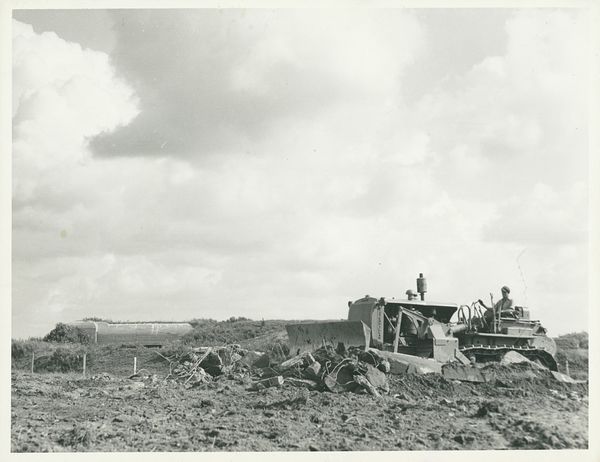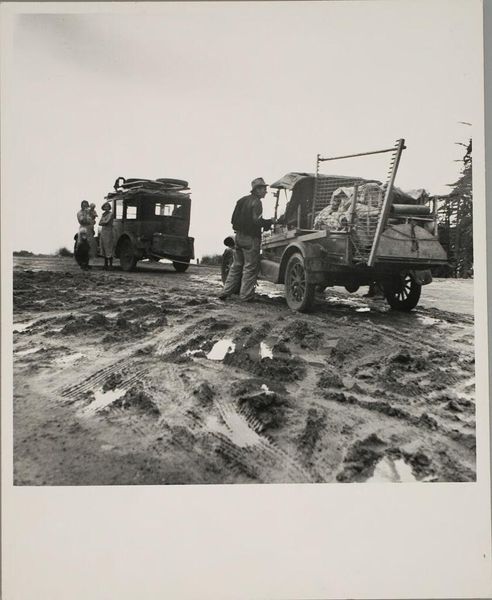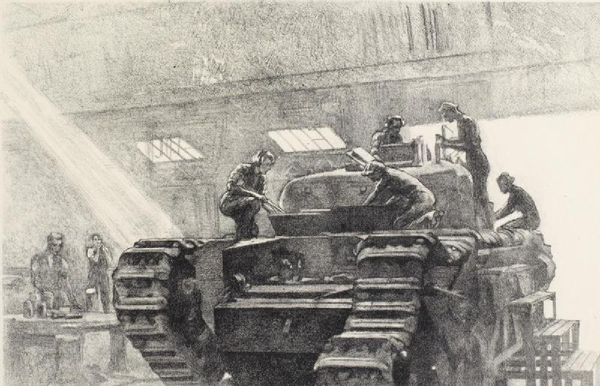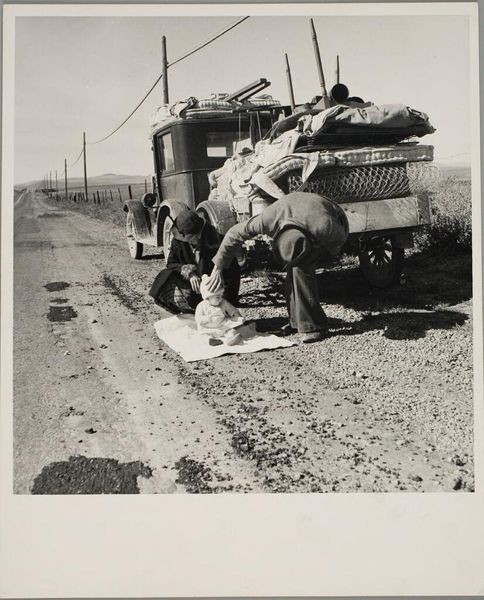
Dimensions: support: 1190 x 1480 mm
Copyright: © Gilad Ophir | CC-BY-NC-ND 4.0 DEED, Photo: Tate
Editor: This is Gilad Ophir's "Shooting Targets" from the Tate collection. The monochrome palette is striking, and the texture of the riddled metal is intense. What is your take on the composition? Curator: The composition is compelling. Note the formal interplay between the geometric precision of the vehicle and the chaotic distribution of the bullet holes. How does this tension affect your interpretation? Editor: It gives a strong feeling of destruction, almost violent. Curator: Precisely. Consider, too, the tonal range—the stark contrast between light and shadow—and how it contributes to the overall sense of unease and the objectification of violence. It is fascinating to see how pure form can evoke such strong emotions. Editor: I see. So, it's the formal elements that create that effect, not just the subject matter? Curator: Exactly. It's about how Ophir manipulates those elements to construct meaning. Editor: That's fascinating. I'll definitely look at the artwork differently now. Curator: Indeed. Paying close attention to the formal qualities of a work allows a richer understanding.
Comments
Join the conversation
Join millions of artists and users on Artera today and experience the ultimate creative platform.
tate 6 months ago
⋮
This text discusses Shooting Targets, 1997 (P11747-P11751), five photographs by Gilad Ophir from the Necropolis Series, a collective work by Israeli artists Ophir and Roi Kuper (born 1956). Tate owns a number of other photographs from this group, four by Ophir (titled Yerucham, 1999, P11752-11755), and eight by Kuper (all Untitled, 1999, P11736-P11743). These photographs depict Mercedes jeeps captured by the Israeli army from the Arabs during the 'Six-Day War' of 1967 and the 1973 'Yom Kippur War' and subsequently used for target practice by the Israeli army. Ophir located them in an abandoned army camp in the desert where they were lined up in a row of five. There are multiple ironies at play here. Mercedes is a German make of car and thus immediately evokes the fate of the Jews during the Second World War. The jeeps were used by the Arabs and thus German equipment was once again employed to attack the Jewish race. Finally, a powerful, high-class piece of machinery, has been rendered impotent. Each one is photographed head on and becomes an icon. They are a brooding presence reeking of death in the desert, a testimony to two different conflicts and the history of a nation at war taking out its grievances and aggression on Arab-owned Mercedes vehicles. The title of Ophir and Kuper's work, Necropolis Series, is telling: the necropolis is literally a 'city of the dead'. It also harks back to the ancient past and archaeology of Israel, when the Jews buried their dead in carved sarcofagi resembling Roman ones, which were placed in catacombs or burial chambers (a notable example in Israel is the huge necropolis of Bet She'Arim, 1-4 century AD). Like these eight untitled photographs, other works in their Necropolis Series deal with Israel's recent past through the portrayal of what its wars and their protagonists left behind, whether they be Jordanian jeeps, abandoned military camps, derelict shelters or man-made mounds. Kuper and Ophir's photographs map the geography of an Israel blighted by war, chronicling neither losses nor successes, but the eerie impact of Israel's wartime relics on its landscape. There are two particular themes which recur in the work of Ophir. One is the opposition of nature to culture and the other is the impact of militarisation on the landscape. In both he seeks an engagement with urgent social and political issues in Israel. Further reading:90 70 90, exhibition catalogue, Tel Aviv Museum of Art, Tel Aviv 1994Gilad Ophir: Cyclopean Walls, exhibition catalogue, Tel Aviv Museum of Art, Tel Aviv 1995/2002 Jeremy LewisonSeptember 2000Revised by Giorgia BottinelliFebruary 2002

